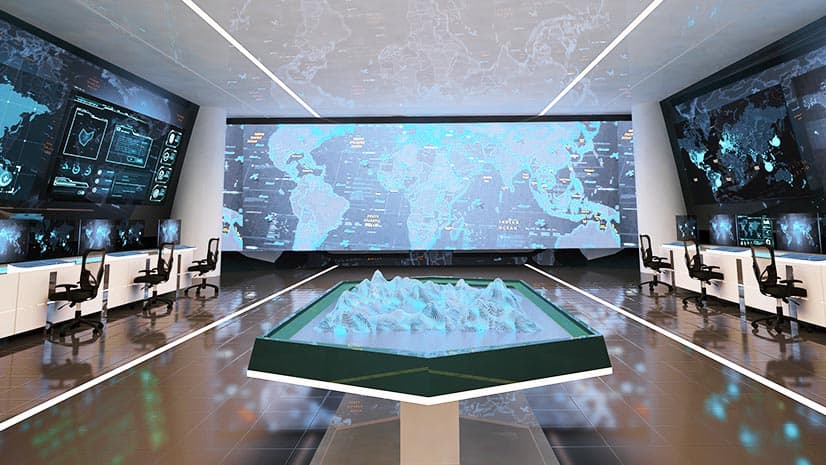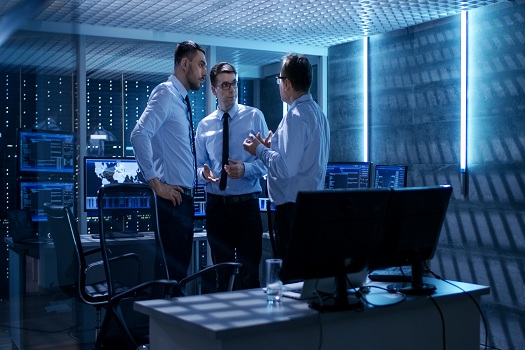Encouraging Your Business with Ironclad Corporate Security Procedures
Encouraging Your Business with Ironclad Corporate Security Procedures
Blog Article
From Cybersecurity to Physical Actions: Enhancing Company Safety in a Changing Globe
By incorporating the toughness of both cybersecurity and physical protection, firms can develop a thorough protection approach that resolves the varied variety of dangers they deal with. In this discussion, we will discover the transforming danger landscape, the requirement to integrate cybersecurity and physical safety and security, the implementation of multi-factor verification actions, the relevance of worker understanding and training, and the adaptation of security actions for remote labor forces. By analyzing these essential locations, we will certainly acquire beneficial understandings into just how companies can strengthen their company safety in an ever-changing world.
Recognizing the Transforming Risk Landscape
The developing nature of the modern-day world demands a detailed understanding of the altering threat landscape for efficient corporate security. In today's interconnected and electronic age, hazards to corporate protection have come to be a lot more complex and advanced. As technology developments and companies come to be progressively dependent on digital facilities, the potential for cyberattacks, data violations, and other safety breaches has dramatically enhanced. It is crucial for companies to remain informed and adapt their protection measures to deal with these advancing risks.
One key aspect of comprehending the altering danger landscape is identifying the various types of threats that companies deal with. Cybercriminals are frequently developing new methods to exploit susceptabilities in computer systems and networks. These risks can vary from malware and ransomware strikes to phishing rip-offs and social design tactics. Additionally, physical risks such as theft, vandalism, and corporate espionage remain widespread concerns for services.
Monitoring and evaluating the threat landscape is essential in order to identify possible dangers and vulnerabilities. This involves remaining updated on the most up to date cybersecurity trends, assessing danger intelligence records, and carrying out regular threat evaluations. By understanding the altering hazard landscape, companies can proactively implement ideal protection procedures to reduce threats and secure their assets, reputation, and stakeholders.
Integrating Cybersecurity and Physical Safety And Security
Incorporating cybersecurity and physical protection is crucial for thorough company protection in today's electronic and interconnected landscape. As organizations significantly count on modern technology and interconnected systems, the limits in between physical and cyber risks are coming to be blurred. To properly protect versus these risks, an alternative approach that integrates both cybersecurity and physical protection steps is crucial.
Cybersecurity concentrates on shielding digital possessions, such as networks, systems, and information, from unauthorized access, interruption, and burglary. Physical security, on the other hand, includes actions to secure physical possessions, individuals, and centers from vulnerabilities and dangers. By incorporating these two domains, organizations can attend to susceptabilities and hazards from both electronic and physical angles, therefore boosting their overall safety and security pose.
The combination of these 2 techniques enables an extra comprehensive understanding of safety dangers and enables a unified feedback to cases. Physical accessibility controls can be boosted by incorporating them with cybersecurity methods, such as two-factor authentication or biometric identification. Cybersecurity steps can be complemented by physical security actions, such as security cams, alarms, and secure access factors.

Executing Multi-Factor Verification Actions
As organizations significantly focus on extensive protection measures, one efficient technique is the implementation of multi-factor authentication procedures. Multi-factor verification (MFA) is a safety and security method that calls for individuals to supply several forms of identification to access a system or application. This strategy adds an extra layer of security by integrating something the customer recognizes, such as a password, with something they have, like a safety or a finger print token.
By applying MFA, companies can significantly enhance their safety and security pose - corporate security. Standard password-based verification has its constraints, as passwords can be conveniently endangered or forgotten. MFA mitigates these risks by adding an additional authentication factor, making it more tough for unapproved people to obtain accessibility to delicate info
There are a number of kinds of multi-factor authentication methods available, including biometric verification, SMS-based confirmation codes, and hardware tokens. Organizations need to assess their specific needs and select the most suitable MFA service for their needs.
Nonetheless, the execution of MFA must be very carefully prepared and carried out. It is important to strike an equilibrium between security and usability to avoid customer irritation and resistance. Organizations must also think about possible compatibility concerns and offer sufficient training and assistance to guarantee a smooth change.
Enhancing Employee Awareness and Training
To reinforce business safety and security, companies need to prioritize boosting employee recognition and training. In today's quickly advancing danger landscape, employees play a critical function in safeguarding a company's delicate info and properties. Sadly, many safety violations occur as a result of human error or absence of recognition. Consequently, organizations require to buy extensive training programs to enlighten their employees regarding possible risks and the most effective practices for alleviating them.
Effective employee recognition and training programs ought to cover a vast array of subjects, consisting of information defense, phishing strikes, social design, password health, and physical security measures. These programs should be tailored to the specific needs and responsibilities of different employee roles within the company. Normal training workshops, simulations, and sessions can assist workers establish the required skills and knowledge to recognize and respond to security hazards properly.
In addition, companies ought to urge a culture of safety and security recognition and supply ongoing updates and suggestions to maintain employees educated about the current dangers and mitigation strategies. This can be done through inner communication networks, such as newsletters, intranet sites, and email projects. By fostering a security-conscious labor force, companies can substantially reduce the chance of safety and security occurrences and shield their important properties from unauthorized gain access why not look here to or compromise.

Adapting Security Procedures for Remote Labor Force
Adapting business safety steps to accommodate a remote workforce is necessary in making certain the protection of sensitive information and possessions (corporate security). With the boosting pattern of remote job, companies have to apply appropriate security measures to mitigate the risks connected with this new way of working
One essential aspect of adapting security measures for remote job is developing safe interaction channels. Encrypted messaging platforms and virtual private networks (VPNs) can aid shield delicate info and stop unauthorized access. Additionally, companies need to implement the usage of strong passwords and multi-factor authentication go right here to boost the safety of remote gain access to.
One more important consideration is the execution of safe remote gain access to services. This involves giving workers with protected access to company resources and data via online desktop computer facilities (VDI), remote desktop methods (RDP), or cloud-based options. These technologies guarantee that delicate info continues to be secured while enabling staff members to do their duties successfully.

Finally, detailed protection awareness training is important for remote workers. Educating sessions should cover finest methods for safely accessing and managing delicate details, recognizing and reporting phishing efforts, and keeping the total cybersecurity health.
Verdict
In verdict, as the danger landscape continues to advance, it is critical for companies to strengthen their protection determines both in the cyber and physical domains. Incorporating cybersecurity and physical safety and security, implementing multi-factor authentication actions, and boosting staff member understanding and training are crucial actions towards attaining durable corporate protection.
In this discussion, we will certainly check out the changing danger landscape, the need to incorporate cybersecurity and physical security, the execution of multi-factor authentication procedures, the significance of staff member awareness and training, and the adjustment of security procedures for remote labor forces. Cybersecurity steps can be enhanced by physical safety and security procedures, such as surveillance cams, alarm systems, and protected accessibility points.
As organizations significantly focus on extensive safety measures, one effective technique is the execution of multi-factor authentication steps.In verdict, as the threat landscape continues to develop, it is critical for companies to reinforce their security measures both in the cyber and Recommended Site physical domains. Incorporating cybersecurity and physical protection, implementing multi-factor authentication steps, and improving worker recognition and training are essential steps towards accomplishing robust business safety.
Report this page